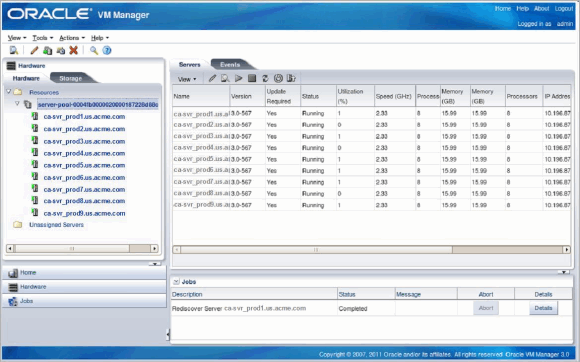There’s no doubt that Oracle faces a substantial challenge when it comes to competing against both VMware and Microsoft in the virtualization category.
But with the release of version 3.0 of Oracle VM and some major shifts in virtual machine adoption, Oracle is betting that it will soon gain a fair amount of momentum in the virtualization category.
Oracle VM 3.0 adds new management tools that automate the provisioning of virtual machines, and include a policy-based management framework, support for a new storage application programming interface, support for the Open Virtualization Format (OVF) and 90 templates for deploying Oracle applications on top of Oracle VM 3.0.
But Adam Hawley, Oracle senior director of product management, says the thing that will ultimately distinguish Oracle VM 3.0 is the ability to run 128 virtual CPUs per virtual machine. At the recent VMworld 2011 conference, Oracle demonstrated support for up to 160 physical CPUs and 2TB memory running on Oracle’s Sun Fire X4800 M2 servers.
As more mission-critical applications migrate to virtual servers, Hawley says the ability to scale performance in virtual machine environments will prove to be critical. As part of that effort, Hawley says Oracle will make available the tools that third-party developers will need to create templates of their own for deploying applications on top of Oracle VM 3.0. In fact, Oracle expects to basically embed Oracle VM 3.0 inside as many applications as possible to not only gain market share, but also eliminate the whole conversation about which virtual machine to deploy because Oracle VM 3.0 is free.
Based on a Xen hypervisor, Hawley says that Oracle VM 3.0 will show just how competitive Oracle can really be in the virtualization space now that the company is bringing the combined application resources of Oracle to bear with the IT infrastructure resources it acquired when it purchased Sun Microsystems. While it’s not likely that Oracle will drive competitors from the virtualization category altogether, it is pretty clear that the company is just now beginning to really put up a fight.



